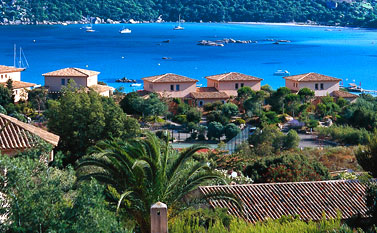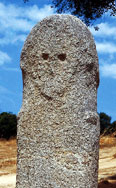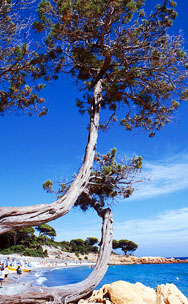- Villa search

- Canaries
- Caribbean
- Croatia, Bulgaria and Hungary
- Cyprus
- Florida
- France and Corsica
- Greece
- Italy
- Lakes and Mountains
- Madeira
- Malta and Gozo
- Portugal
- South Africa
- Spain - Balearics
Information

Santa Giulia
But that’s changing. Villa companies are widening their portfolios of properties, and the GB Airways service from Gatwick to Bastia has been expanding (see their website for latest developments).
Having explored the rugged landscapes of the north west coast and the chic resort of Calvi on a previous trip, we took the Bastia flight and set out to discover the southern part of the island.
First stop was Porto Vecchio – literally ‘Old Port’ in Italian. Corsica has had many uninvited visitors across the centuries – most with invasion on their minds – but it was the Genoese who stayed longest and had the most lasting influence. Despite Corsica being annexed to France since 1768, five centuries of Genoese rule have left the island with Italian place names and a distinctive architectural heritage.

A menhir at Filitosa
The official language is French but you’ll hear Corsican spoken in rural areas and see bilingual road signs. Dialects vary from north to south and even from one valley to another, but are all strongly influenced by Italian.
The old part of Porto Vecchio is in a hilltop location at the end of a five-mile gulf sheltering a lively marina and commercial harbour. The town was fortified under the Genoese – follow numbered panels through narrow streets packed with boutiques and tempting cafés to find out more about its past.
The area is a popular choice for villa holidays, not just because of the atmospheric town itself but because of its superb pine-fringed beaches where white sand is lapped by aquamarine water. Try Palombaggia or neighbouring Santa Giulia.

Old town, Bonifacio
Porto Vecchio is also a good base for exploring inland – take a drive through the Ospedale Forest where granite outcrops make strange shapes among the scented pine trees; stop at picturesque villages like Zonza and Ste-Lucie-de-Tallano, and try the spectacular mountain road over the Col de Bavella – the panorama changes with every bend.
There have been people in these mountains for thousands of years. The Alta Rocca region is rich in ancient sites including the Bronze Age settlement of Cucuruzzu, where rock shelters dot the woodland trails. Meanwhile, an air of mystery surrounds Filitosa, near the west coast, where 2,000 years before Christ, sculptors carved strange, solemn faces onto giant menhirs.
Present day Corsicans are far less solemn. In fact everyone we met seemed to wear a permanent smile – not difficult perhaps when you live in such a glorious environment. Wherever we stopped – in busy towns or rural communities – we found the Corsican people enormously welcoming. And not just our friendly cabbie from Highgate either.
From Porto Vecchio, it’s a half-hour drive to Bonifacio at the southern tip of the island, one of my all-time favourite towns which falls off the top of the scale when it comes to spectacular locations.
Arrive by road and you skirt the marina nestled at the back of a long, narrow fjord. Terraced cafés and small boutiques line the busy quayside; gleaming yachts sit alongside tourist cruise boats. And, above it all towers the bulk of Bonifacio’s huge citadel dominating the pedestrian streets of the old town, high on the rocky peninsula.
View the town from the sea, however, and Bonifacio is even more impressive – a curving wall of sheer chalk cliffs sculpted in horizontal grooves by centuries of wind and water, and topped by a fringe of mediaeval houses which seem ready to slide into the sea at any moment.
Take a cruise boat out to the Lavezzi Islands, a cluster of uninhabited, rocky islands between Corsica and Sardinia which are now protected as a nature reserve. You can spend anything from a couple of hours to a whole day exploring the beaches and inlets, but make sure you don’t miss the last boat back – there are no facilities on the island.
Bonifacio’s rocky situation means there’s no beach immediately adjacent to the town but there are beautiful, unspoilt bays within a short drive, as well as fashionable Sperone Beach with its golf course.
home | destinations and editorial | villa search | property for sale | car hire | flights | services
villaseek blog | contact villaseek | links and resources | advertise your villa© Dune Root Ltd and Villaseek.com 2012 - Caribbean
- Canaries